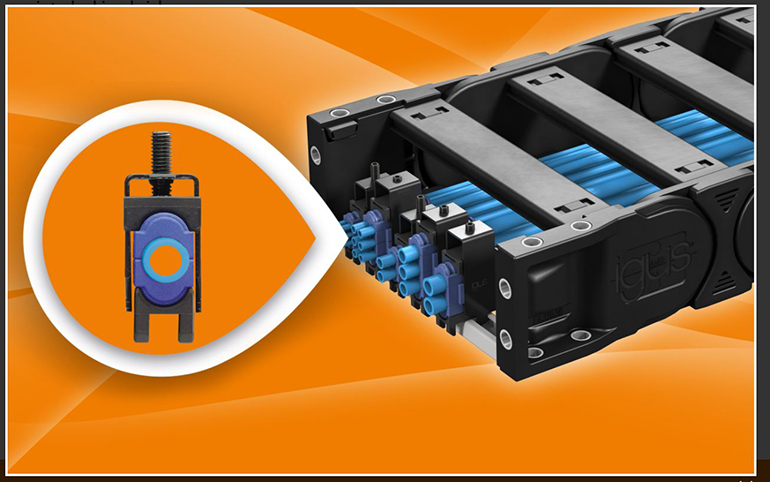igus has introduced a new CFX series clamp designed to provide strain relief for pneumatic hoses in e-chain cable carriers.

Too tight and it breaks off — an age-old saying that applies not only to screws. The same applies to clamps. These clamps relieve the strain on cables and pneumatic hoses in the cable carriers of machines and systems during movement and hold them in position. However, if technicians over tighten the clamps, the clamps press into the jacket surfaces and crush them, causing permanent cross-sectional changes. This can lead to uneven compressed air flows in pneumatic hoses and consequently to malfunctions. To avoid this, igus has expanded the CFX series with a new clamp model that does not compress the cables.
At the heart of the new CFX clamps are the so-called pneumatic double tubs, blue inserts that enclose the hoses from top and bottom. When the technician turns the screw of the clamp, the clamp jaw does not press directly on the surface of the hose, but on the upper insert of the stacker saddle. As soon as it hits the lower insert, the optimum holding force is automatically achieved. The hose sits securely in position. Time-consuming checks of the tightening torque are no longer necessary. It is also mechanically impossible to accidentally apply too much pressure and damage the hose.
To provide protection for as many pneumatic hoses as possible, igus manufactures the blue stacker saddles in several sizes. The inserts, which the company previously produced for the design study using a 3D printer, are now available as cost-effective injection-molded versions for cable diameters of 4, 6, 8, 10, and 12 mm. Additionally, to save space, it is even possible to position two hoses next to each other in a stacker saddle for cables with diameters of 4 and 6 mm. Therefore, up to ten hoses can be accommodated in one clamp.
igus Inc.
igus.com
Clamp hoses without crushing. With the new clamps from igus, pneumatic hoses are reliably held in place. At the same time, their cross section remains fully intact. (Source: igus GmbH)
Filed Under: Hose Assembly Tips, Tube & Hose